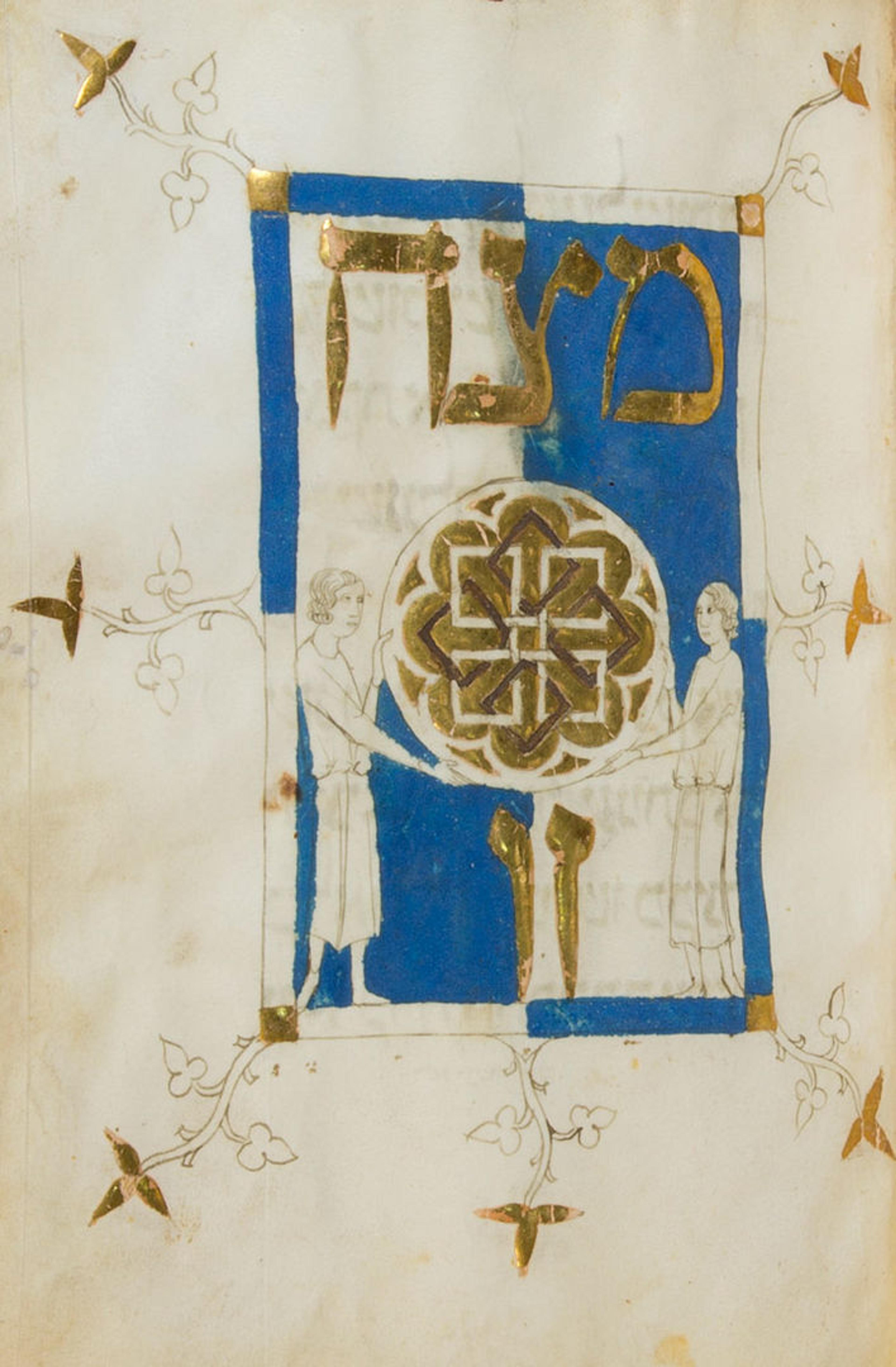
Prato Haggadah, ca. 1300. Tempera, gold, and ink on parchment. Spanish. The Library of the Jewish Theological Seminary, New York
«We are thrilled that one of the finest Haggadot from 14th-century Spain, the Prato Haggadah, is currently on view in the Treasury at The Met Cloisters, on loan from The Library of the Jewish Theological Seminary. This is a text that was formalized in the Middle Ages for use at the Seder, the festive meal celebrating the Jewish holiday of Passover.»
The parchment of this Haggadah is pristine; its lettering is impeccable. It is exquisitely painted and gilded—except where it's not. Thirty of its leaves are complete, but a greater number (58) are unfinished. Fifty have text only, and some pages are entirely blank. So, while all Haggadot have four standard questions embedded in their text, this Haggadah poses a fifth: Why is this Haggadah unfinished? The question cannot be answered. It is not a unique situation, as there are unfinished Christian books from the Middle Ages as well. Still, it haunts us a bit. Across history and cultures, there are too many tales of books abandoned, or lost. The loss of Hebrew manuscripts is particularly acute. But this book, unfinished and unusable though it was, continued to be treasured. Who were its responsible "curators"? It is a mystery.
There are many blank pages in the history of this manuscript. On the basis of its style and text, scholars agree that it was created in Spain about 1300. What interrupted its completion? Did it stay in Spain until 1492, when the Jewish community was forcibly expelled? Perhaps, for by 1617 it was in Italy, where significant numbers of Jews from the Iberian Peninsula had settled. After 1617, the manuscript's whereabouts are unknown until 1928, by which time it belonged to Dr. Ludwig Pollak. A Czech archaeologist, his most celebrated discovery was the missing right arm of the statue of Laocoön and His Sons, which he gave to the Vatican; his acquisition and safeguarding of this rare Haggadah adds considerable luster to his well-established reputation. Tragically, Dr. Pollak was deported to Auschwitz, where he was killed in 1943. The manuscript, however, was not lost to his family; they gave it to the son of David Prato, chief rabbi of Rome, to whom Pollak had promised the manuscript. The Prato family, in turn, sold it to The Jewish Theological Seminary.
It is easy to understand why the manuscript was preserved, for what refinement characterizes the drawing and what a celebration it reflects! The matzoh (bread without leaven eaten during Passover) is half the size of an adult, and it is presented with a certain formality by a man holding it on each side. For sheer size and ambition, there has been little to compete with this matzoh since but for some local, newsworthy efforts to create outsize matzoh balls. So proclaims the Haggadah: "Let all who are hungry come and eat!" It would appear that the person who commissioned the Prato Haggadah was ready to feed a crowd, whether this celebratory book was finished or not.